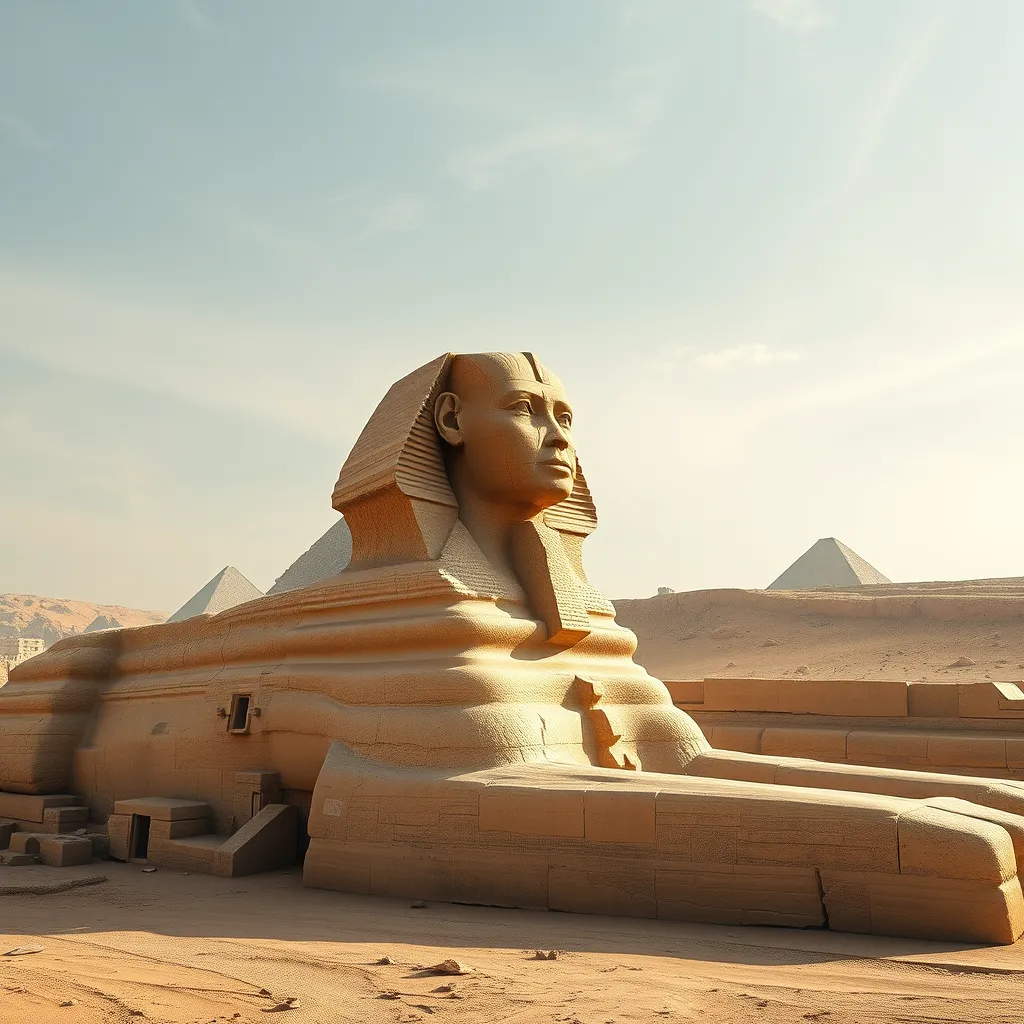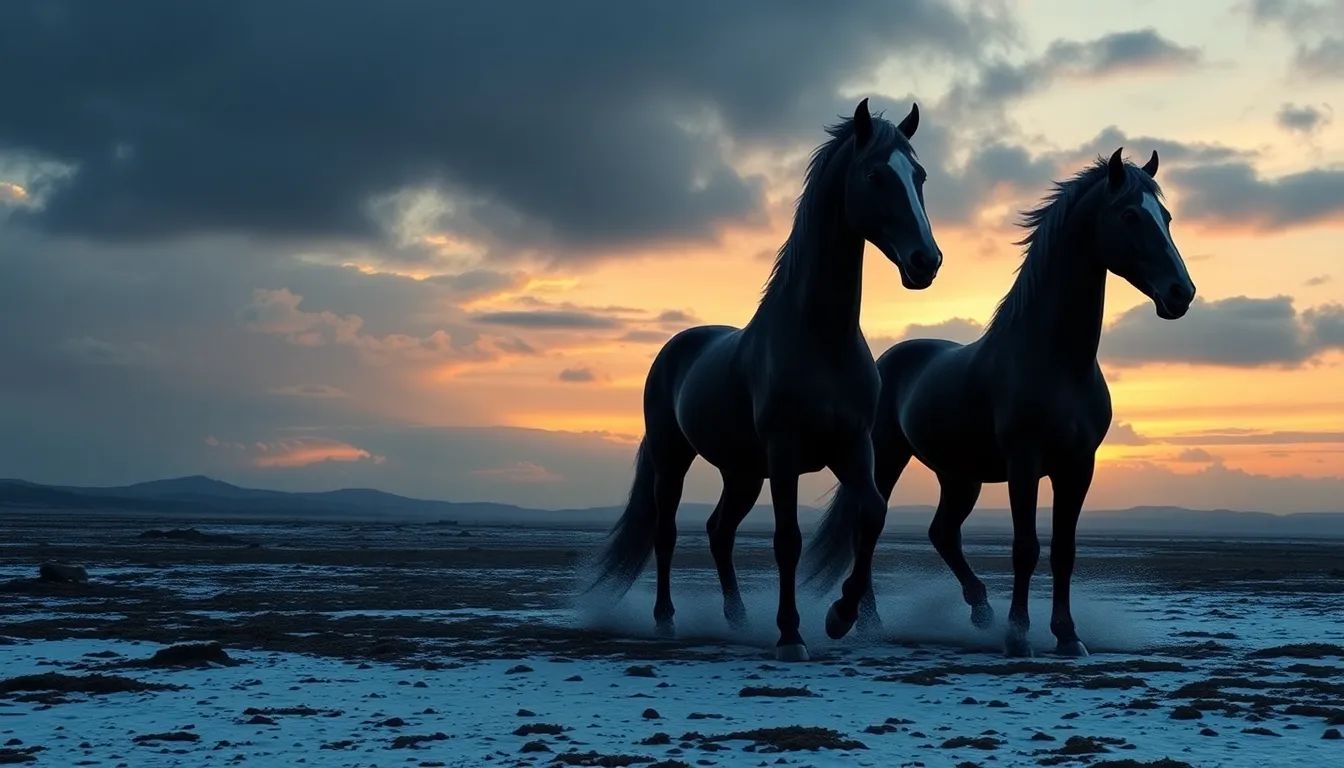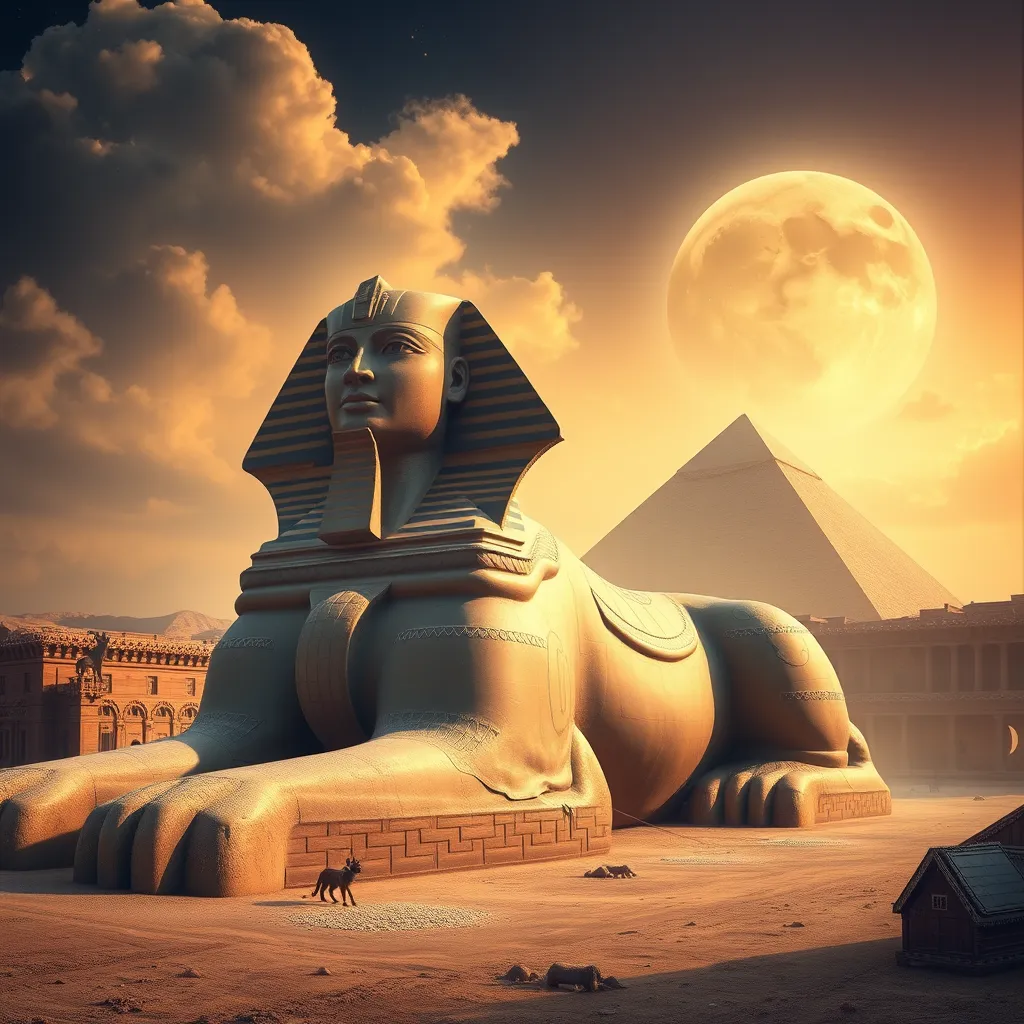The Sphinx as a Source of Inspiration: Exploring its Influence on Artists and Writers
I. Introduction
The Sphinx, a mythical creature with the body of a lion and the head of a human, stands as one of the most iconic symbols of ancient Egypt. Its historical significance is profound, as it represents not only the architectural prowess of the Egyptians but also their complex mythology and belief systems. The Great Sphinx of Giza, in particular, has attracted the curiosity of historians, archaeologists, and artists alike for centuries.
The allure of the Sphinx extends beyond its physical presence; it permeates art and literature, serving as a powerful source of inspiration for countless creators. From ancient texts to modern interpretations, the Sphinx embodies themes of mystery, knowledge, and the duality of human existence. This article aims to explore the Sphinx’s influence on creative expression, examining how this enigmatic figure has inspired artists and writers across generations.
II. The Myth and Symbolism of the Sphinx
The origins of the Sphinx can be traced back to ancient mythology, particularly in Egyptian and Greek traditions. In Egyptian mythology, the Sphinx was often associated with the sun god Ra and represented the protection of sacred spaces. Conversely, in Greek mythology, the Sphinx is known for posing riddles, symbolizing the complexities of knowledge and the consequences of ignorance.
Symbolically, the Sphinx carries different meanings across various cultures:
- Mystery and Enigma: The Sphinx’s riddles and its ambiguous nature evoke a sense of intrigue.
- Protection: In Egyptian culture, it serves as a guardian of temples and tombs.
- Duality: The combination of human intellect and animal strength represents the duality of existence.
Throughout history, the Sphinx has become a representation of the unknown and an enduring symbol of the quest for knowledge.
III. The Sphinx in Visual Arts
Many prominent artists have drawn inspiration from the Sphinx, resulting in a rich tapestry of visual interpretations. Notable examples include:
- Jean-Leon Gerome: His painting “The Sphinx” captures the creature in a hauntingly beautiful manner, blending realism with mysticism.
- August Rodin: The sculptor created works that evoke the Sphinx’s enigmatic nature, emphasizing its sculptural form and presence.
The influence of the Sphinx has also permeated modern and contemporary art. Artists such as Salvador Dalí and Henri Matisse have incorporated elements of the Sphinx into their works, using it as a motif to explore themes of surrealism and abstraction.
Artistic interpretations of the Sphinx vary widely, from traditional depictions to more abstract representations. The Sphinx’s presence is also felt in architectural design, where its form has inspired structures across cultures, blending functionality with artistry.
IV. Literary Representations of the Sphinx
The Sphinx has played a significant role in ancient texts and mythologies. In Greek literature, the Sphinx is famously featured in Sophocles’ “Oedipus Rex,” where it poses a riddle that Oedipus must solve to save Thebes. This portrayal emphasizes the themes of fate, knowledge, and the search for truth.
In addition to classical literature, the Sphinx has inspired modern literary works. Authors like T.S. Eliot and H.P. Lovecraft have drawn upon Sphinx imagery, using it to explore existential themes and the nature of reality.
V. The Sphinx in Poetry
The Sphinx has also made its mark in the realm of poetry, where its enigmatic qualities inspire various themes:
- Mystery: Poets often delve into the allure of the unknown, echoing the Sphinx’s riddles.
- Knowledge and Ignorance: The tension between what is known and what remains hidden is a common poetic exploration.
Notable poets influenced by the Sphinx include:
- Hilda Doolittle (H.D.): Her work often incorporates mythological elements, including the Sphinx, to explore identity and the feminine experience.
- Rainer Maria Rilke: Rilke’s poems reflect on the mystery of existence, drawing parallels to the Sphinx’s dual nature.
This interplay of the Sphinx’s mystery and poetic expression creates a profound connection between the creature and the human experience.
VI. The Sphinx in Popular Culture
In contemporary society, the Sphinx remains a prominent figure across various forms of popular culture. Its presence can be seen in:
- Film: Movies such as “The Mummy” and “The Sphinx” incorporate the creature into their narratives, emphasizing its mythical qualities.
- Television: Series like “Lost” and “The X-Files” reference the Sphinx as a symbol of mystery and the unknown.
- Music: Artists in various genres have used the Sphinx in their lyrics and album art, symbolizing enigma and allure.
The Sphinx has evolved into a cultural icon, representing the intersection of history and imagination in contemporary artistic expression.
VII. The Legacy of the Sphinx’s Influence
The Sphinx continues to inspire new generations of artists and writers. Its multifaceted nature allows for diverse interpretations and adaptations across various art forms. The cross-cultural influences of the Sphinx can be seen in:
- Visual Arts: Emerging artists incorporate Sphinx motifs in innovative ways, reflecting modern societal themes.
- Literature: New literary works frequently reference the Sphinx, exploring its symbolism in fresh contexts.
The impact of the Sphinx on global artistic and literary movements is undeniable, serving as a bridge between ancient wisdom and contemporary creativity.
VIII. Conclusion
In summary, the Sphinx’s multifaceted influence on artists and writers is profound and enduring. From its origins in ancient mythology to its presence in modern popular culture, the Sphinx continues to captivate the imagination and inspire creative expression.
As a muse, the Sphinx embodies the complexities of knowledge, mystery, and the human experience. Its legacy endures, reminding us of the importance of creativity in our understanding of the world today.




